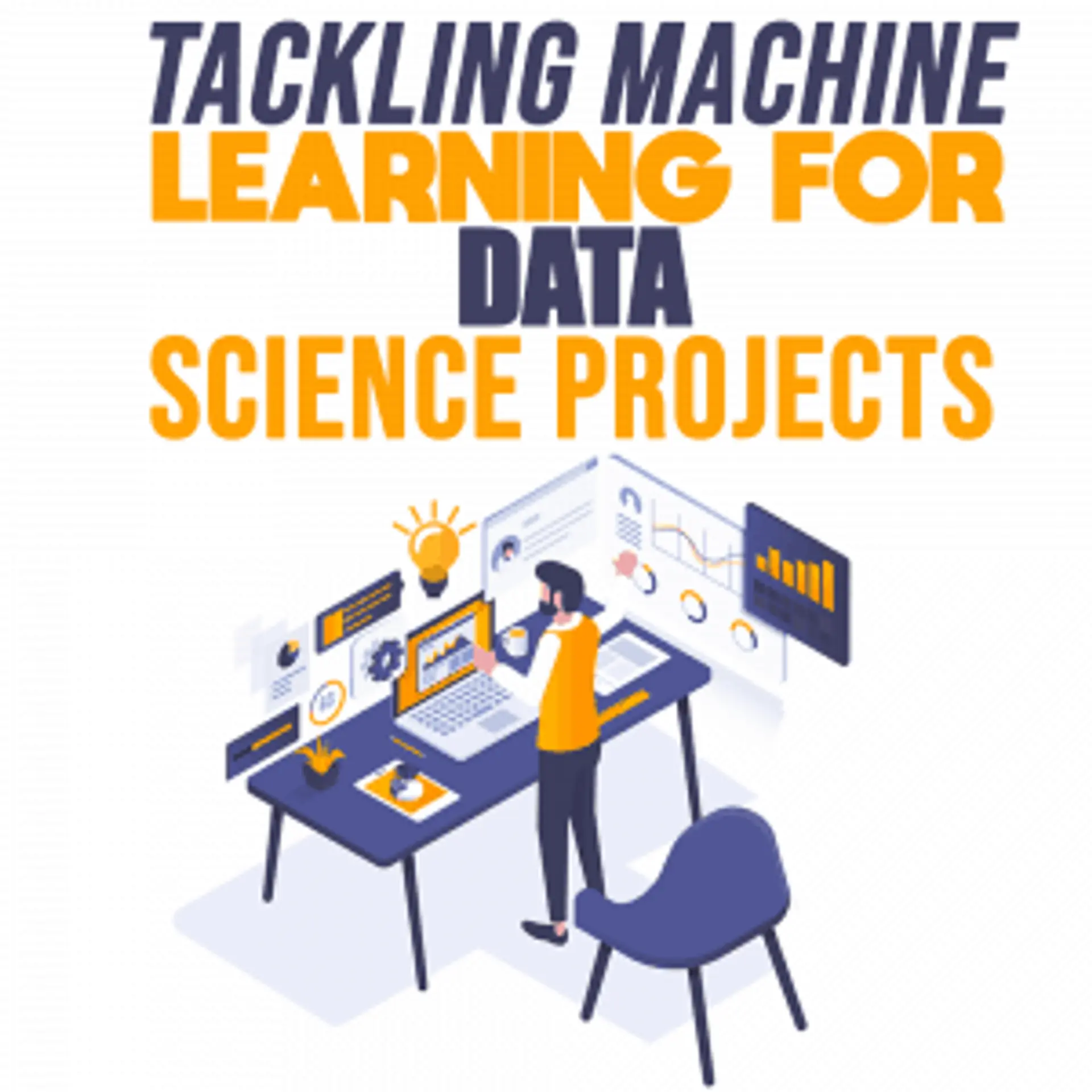

Tackling Machine Learning for Data Science Projects
Organizations around the world have to deal with massive loads of data every day to run their businesses successfully. These vast amounts of data are called “big data.” Dealing with big data efficiently by manual means is a huge, time-consuming task.That's where the importance of machine learning comes into play. Machine learning turns raw and unrefined data into processed data with the help of machines, providing valuable insights that make it much easier to deal with.
Creating and executing these kind of data science projects can be a hassle, even with the help of machine learning. But before we get into the ins and outs of machine learning, first it's important to know what a data science project actually is.
What Is a Data Science Project?
A data science project involves a well-organized process of using valuable data to solve various issues that come up during the business implementation.
Most organizations out there spend their time actively executing data science projects so they can proactively use the data whenever required. Some of the expected results of these data science projects might include:
- revenue prediction
- making internal operations more efficient
- reaching out to a broader audience through marketing strategies
- predicting banking and other financial services
There are certain systematic approaches to follow while implementing a data science project within your organization. It can be at either the managerial level or an individual level. The next question to consider is when to begin.
When To Begin a Data Science Project?
We saw above some possible motivations behind implementing a data science project. But here we will focus on mainly two scenarios. They are as follows:
At a managerial level, when the top officials of an organization begin to implement a data science project, the company may face specific operational issues, prompting management to make use of data insights for resolving problems.
The majority of companies will have big data analysts or data scientists to deal with these. These professionals, who are experienced in dealing with big data, provide relevant insight to the top officials of the organization.
At an individual level, data science projects can also help the individual or employees solve specific issues they are facing. Sometimes, there will be situations in which the ordinary employees may have to invest more time on a particular task.
The data insights will help enable them to finish that specific task efficiently. The organization will provide access to the data warehouse and analytics tools.
Relation Between Machine Learning and Data Science Projects
Data science is built upon three significant blocks:
- Mathematics (specifically statistics)
- Computer Science
- Business Acumen and Domain Knowledge
Machine learning comes under the subcategory of artificial intelligence. It’s a fully automated process completed by machines analyzing the data available and making absolute predictions based on the specific questions asked.
This is achieved using the subjects of mathematics and computer science. As it becomes apparent, machine learning and data science are closely related!
Workflow of a Data Science Project
If you are planning to proceed with a data science project, there are specific questions you have to answer. Let’s take a look at them, one by one.
What Is the Business Issue You Are Trying To Fix?
Having a clear understanding of the issue you want to fix is very important before the initiation of your data science project. Make sure that the data insights you get will resolve the problems. Have a proper understanding of the solutions you want. The data experts will be able to help you achieve that understanding.
For instance, assume that the management of a retail store needs to develop a model that can predict the success rate of its outlets in new locations. The duty of a data scientist is to collect the information regarding consumer behavior and patterns of the people in the loci.
These data insights will enable the firm to predict the business turnover they could expect from that particular location. Also, the data will act as a source for future business processes too.
Do You Have All the Data To Fix the Issue?
It's better to explain this particular using an example. Let us take into consideration the case of the retail store we saw earlier.
In this example, you should know things like:
- store location
- revenue
- the total area of the store in square feet
- Approximate number of customers
- number of employees per location
All this data is already in your database. But you will sometimes have to make use of external data sources like demographics, population, and weather conditions of the area to get more accurate information.
How to Sort Out and Arrange Them Accordingly?
Arranging the raw data is very important. Converting raw data into a processed format is done using the ETL process. It stands for extract, transform, and load using various tools.
Extraction is the selection of data from various sources; whereas transformation refers to making the data organized, avoiding repeating information, and thus normalizing them. Finally, load means to upload the processed data to a data analytics tool.
Algorithms Used for Machine Learning
Machine learning algorithms can be subdivided into two parts:
- Unsupervised: This method does not have any particular target to achieve.
- Supervised: A supervised method has a specific target to achieve, and also the goal is compared with the data.
Let’s take a closer look at both of them.
Unsupervised Machine Learning Methods
The unsupervised machine learning algorithm can be again subdivided into the following:
- Clustering – Cluster means “group.” In this method, the data scientist ties up a group of similar observations together. It's another format of the exploratory data analysis.
- Dimension reduction – Sometimes, while analyzing large data sets, one can notice the involvement of variables that are related to each other. So those redundant variables have to be eliminated. Dimension reduction enables us to achieve that result. The best example of this algorithm is principal component analysis (PCA).
Just like the unsupervised machine learning algorithm, the supervised machine learning algorithm is also subdivided into certain types, as detailed below.
Supervised Machine Learning Methods
The supervised machine learning algorithm can be again classified into the following:
- Regression – A regression algorithm finds the relationship between a dependent variable and one or more independent variables. The output yielded will also be a numeric value.
- Classification – A classification algorithm helps to classify a particular observation belonging to particular sector. The output is two or more categories. Sometimes it may be a “Yes” or “No.”
- Class Probability Estimation – Sometimes there are cases requiring more than the standard binary classification. D class probability estimation stands apart, where the output value varies between 0 and 1.
Make sure you have a thorough knowledge about all types of machine learning algorithms in detail so that you can extract the best.
Data Science Is an Art
As we have described above, data science is an art where skills in both mathematics and computer science are required.
Data structures and algorithms are the necessary foundation for computer programming. The data structure is a way of storing data in an organized format and using it for future purposes. The algorithm is a step-by-step procedure that allows us to reach the desired output.
And so, the data scientists who develop algorithms for data science projects will need to refine or alter the model with a new set of variables and rows of data. Moreover, a thorough understanding of machine learning is necessary.
Dealing with big data is obviously a tiresome task, but if dealt properly with the integration of machine learning, it’s definitely worth it. You can do wonders!
For more consult a leading IT service provider, they could help you in multiple ways...





